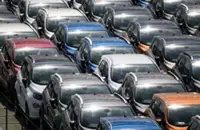The US government has been investigating Autopilot for crashing into emergency vehicles parked on freeways, as well as hitting motorcycles and crossing tractor-trailers. — AP Photo
DETROIT: Tesla is allowing some drivers to use its Autopilot driver-assist system for extended periods without making them put their hands on the steering wheel, a development that has drawn concern from US safety regulators.
The National Highway Traffic Safety Administration has ordered Tesla to tell the agency how many vehicles have received a software update making that possible and it's seeking more information on what the electric vehicle maker's plans are for wider distribution.
Already a subscriber? Log in
Save 30% OFF The Star Digital Access
Cancel anytime. Ad-free. Unlimited access with perks.





